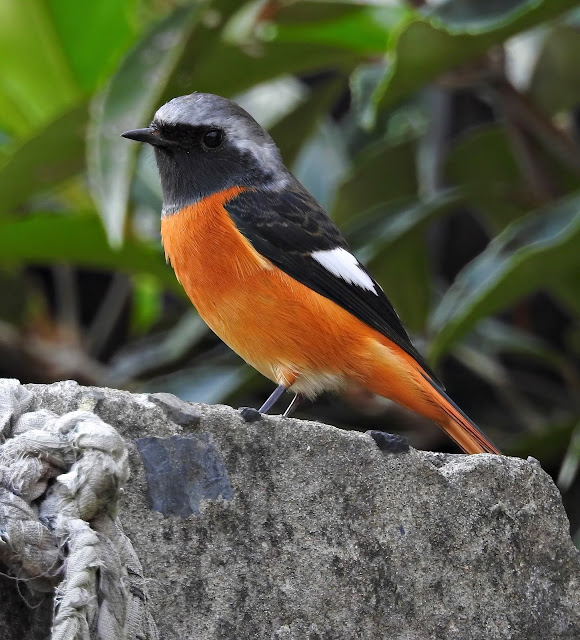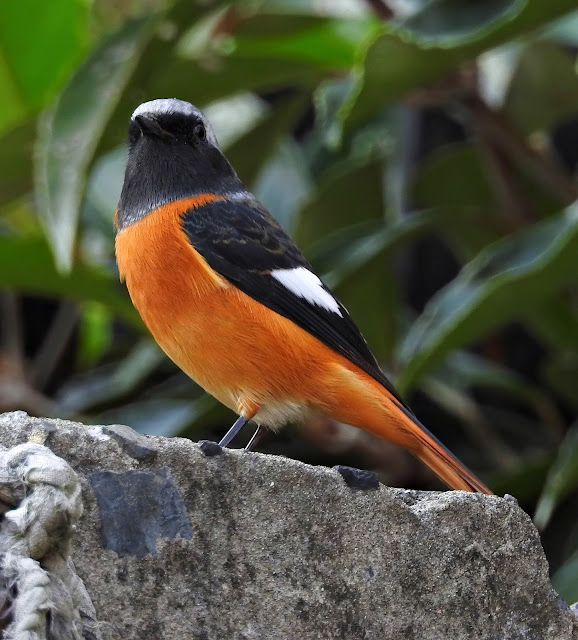The Daurian redstart (Phoenicurus auroreus) is a small songbird from Asia. The species was first described by Peter Simon Pallas in 1776. It was formerly classed as a member of the thrush family but is now generally considered to be an Old World flycatcher.
Daurian redstarts are strongly sexually dimorphic, meaning that males and females are not similar in their appearance. Breeding males have a grey crown and nape with lighter forehead and crown-sides, a black face and chin, brownish mantle and wings, and a large white wing patch; the chest, lower back, and rump are orange, and the tail is black with orange sides. Juvenile males are similarly patterned but much duller and less clearly marked. Females are warm brown above, paler below, have an orange rump and tail sides, and have a large white wing patch similar to the males. Bill, eye, legs, and feet are black in both sexes.
Daurian redstarts are found in Manchuria, southeastern Russia, northeastern Mongolia, central China, and Korea. They are migratory with some populations wintering in Korea, Japan, southeast coastal China, and Taiwan, and other populations spending winter in northeast India and parts of Southeast Asia. Daurian redstarts prefer to live in open forests, forest edges, agricultural margins, and are also commonly found in parks and urban gardens.
Daurian redstarts are active during the day and usually spend their time singly or in pairs. They don't tend to form flocks and during the breeding season become territorial. They feed during the daylight hours searching for food both in trees and on the ground. Daurian redstarts have an agile flight when foraging and can even perform short aerial sallies. They are not wary of humans and often allow them to approach quite closely before flying away.
Daurian redstarts are carnivores (insectivores) and herbivores (frugivores, granivores). Insects make up a large part of their diet, especially during the breeding season and they also eat berries and seeds.


